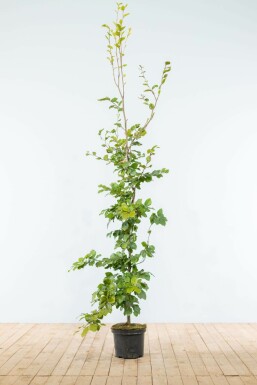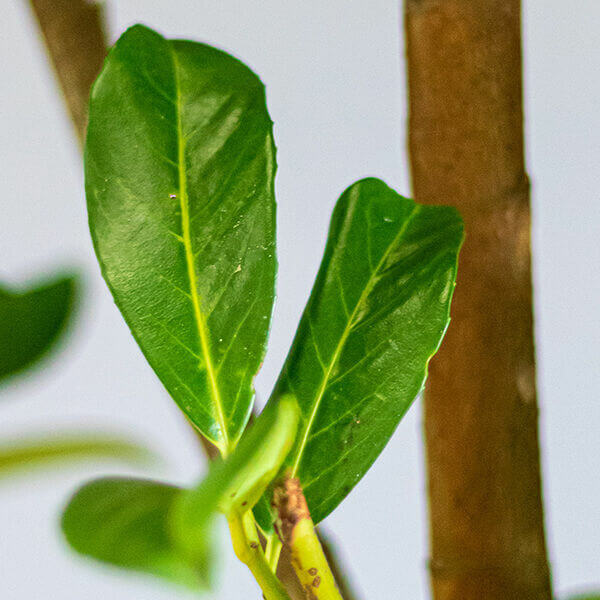Hedge Plants For Porch Edges
Improve your garden's attraction with lavish hedge ranges such as Yew (Taxus), Thuja, Laurel, Photinia, and Bamboo, celebrated for their structural integrity and ecological advantages.
Yew and Thuja offer evergreen coverage and winter season resilience, while Laurel provides quick growth and broad, aromatic leaves.
Photinia adds seasonal appeal with its vibrant red foliage, and Bamboo lends a low-maintenance, tranquil ambiance.
These hedges enhance air quality, reduce noise, and develop tranquil, private spaces.
Correct planting, spacing, and maintenance guarantee energetic growth and environmental consistency.
Explore how these rich ranges can raise your garden's beauty and well-being.
Secret Takeaways
Change Your Garden With Lush Hedge Ranges
- Select Yew for its dense, evergreen growth and exceptional durability.
- Choose Laurel for its quick development and broad leaves, making sure quick privacy.
- Select Photinia for its dynamic seasonal foliage, which turns a striking dark red.
- Make use of Bamboo for a low-maintenance, winter-hardy hedge with visual appeal.
- Area plants 2-3 per meter and prune regularly for optimal growth and health.
Popular Hedge Plants
When transforming a garden with rich hedge varieties, it's important to think about popular hedge plants such as Yew, Thuja, Laurel, and Photinia due to their special attributes and advantages.
Yew (Taxus) is extremely esteemed for its longevity and thick, green development, making it a prime option for sustaining landscapes.
Thuja is kept in mind for its evergreen foliage and robust winter season durability.
Photinia includes seasonal vibrancy with red leaves that darken gradually, producing dynamic visual appeal.
Laurel offers rapid growth and aromatic, broad leaves, perfect for quick privacy.
Additionally, Bamboo is an excellent choice for atmosphere, providing a low-maintenance, winter-hardy choice that enhances the garden's aesthetic with its classy, swaying walking canes.
These choices accommodate a variety of horticultural requirements and choices.
Benefits of Garden Hedges
Garden hedges use a plethora of benefits, making them a valuable addition to any landscape. These natural barriers are cost-efficient to execute and provide substantial wind security, enhancing air blood circulation and contributing to sound reduction. The dense foliage of hedges like Thuja and Beech guarantees privacy by obstructing visibility, creating a remote and tranquil environment.
Hedges likewise play a vital role in microclimate regulation, providing a steady environment that fosters plant development and lessens temperature changes. Their intricate leaf structures filter toxins, improving air quality and contributing to a healthier garden environment.
Moreover, hedges master sound reduction, taking in and deflecting acoustic waves to lower ambient noise levels. This dual performance of supplying both visual and acoustic privacy boosts the total tranquility and aesthetic appeal of any garden.
Planting and Upkeep Tips
For an effective hedge, careful preparation of the planting location is essential. Guarantee the soil has correct pH and drain to support strong root development.
Space the plants appropriately for the selected types. Water the hedge frequently during its initial growth phase, adjusting as needed with seasonal changes.
Execute a methodical insect control and disease prevention technique, using organic or chemical treatments when required. Routinely inspect for aphids, mites, and fungal infections.
Apply mulch to keep wetness and reduce weeds. Seasonal pruning promotes thick development and air blood circulation, necessary for plant health.
Following these standards will assist you cultivate a dynamic, properly maintained hedge that boosts the charm of your garden.
Spacing and Trimming Guidelines
Spacing and Cutting Standards
Proper spacing and trimming are vital for cultivating healthy, aesthetically appealing hedges. Sufficient spacing guarantees each plant receives enough nutrients, light, and air flow.
Follow these guidelines for optimal hedge upkeep:
- Spacing: Position hedge plants 2-3 plants per meter to motivate robust growth.
- Pruning Techniques: Routine pruning is essential for keeping preferred hedge height and shape. Trim brand-new development in summer and cut back older wood throughout winter season.
- Seasonal Care: Adjust cutting schedules and techniques according to seasonal requirements to guarantee plant health.
- Hedge Height: Regularly display and trim to preserve the desired hedge height and accomplish uniform looks.
Sticking to these steps will ensure your hedge flourishes, boosting both the appeal and functionality of your garden.
Selecting the Right Hedge
Choosing the Right Hedge
Choosing the proper hedge involves examining elements such as fully grown height, foliage density, and environmental durability. Effective hedge plant Additional resources selection requires understanding each types' development attributes and site-specific versatility.
For example, Yew (Taxus) uses excellent longevity and thick development, while Thuja is significant for its winter durability. In addition, considering maintenance requirements is essential; fast-growing types like Laurel or Privet need routine cutting, whereas low-maintenance alternatives like Bamboo or Ivy might be more suitable for those looking for very little maintenance.
Ecological elements such as soil type, light availability, and wetness conditions need to likewise guide the selection process. This careful approach ensures the chosen hedges will thrive, providing both visual and functional advantages to the garden landscape.
Delivery and Planting Guidance
To ensure your hedge plants flourish, they need to be delivered by specialized carriers and planted without delay upon arrival.
Follow these vital actions for successful planting:
- Soil Preparation: Enrich the soil with raw material to enhance drain and nutrient content.
- Planting Depth: Create a trench two times the width and equivalent to the depth of the root ball.
- Watering Techniques: Water thoroughly after planting, keeping the soil regularly damp but not saturated.
- Mulching: Use a layer of mulch to keep moisture and suppress weeds.
Consumer Support and Service
Given the vital role of prompt support in horticultural pursuits, our customer assistance team is available 6 days a week through telephone, e-mail, and social media to offer skilled guidance and swiftly attend to any concerns. Their devotion to quick reaction times guarantees consumer fulfillment by dealing with questions associated with plant health, optimum planting methods, and upkeep schedules.

----------------------
Telephone
Within 24 hours
This detailed support group, reinforced by an excellent 9.3/ 10 consumer ranking, highlights our dedication to improving the gardening experience for every customer.
Often Asked Concerns
For How Long Does It Take for Hedge Plants to Develop?
Hedge plants typically need one to three years to end up being completely developed, with the exact period varying by types and growing conditions.
Effective care throughout this crucial duration is important for robust development. Consistent watering, watchful weed control, and proper fertilizer application are critical in promoting strong root advancement.
For example, fast-growing species like Laurel might establish faster, while slower-growing varieties such as Yew may take longer. Persistent upkeep accelerates the establishment procedure, resulting in healthy and thick hedges.
What Are the Best Hedge Plants for Personal Privacy?
The concern of the best hedge plants for privacy includes assessing evergreen and deciduous options.
Evergreen hedges like Thuja, Laurel, and Cypress provide year-round protection, ensuring constant privacy.
On the other hand, deciduous hedges such as Beech offer seasonal personal privacy, shedding leaves in cooler months.
Key upkeep tips for privacy hedges consist of routine trimming, fertilizing in spring, and proper spacing-- generally 2 to 3 plants per meter.
Furthermore, constant watering and thorough weed elimination are crucial for promoting healthy, dense growth.
Can Hedge Plants Attract Wildlife to My Garden?
Yes, hedge plants can attract wildlife to your garden by providing important benefits like shelter, food, and nesting sites, thereby enhancing local biodiversity. Yew, holly, and laurel are excellent for attracting birds, while ivy supports a range of pests.
Nevertheless, it is necessary to note that there are some disadvantages, such as increased maintenance to manage bugs and routine upkeep. Carefully picking and keeping hedge varieties can help stabilize these drawbacks and advantages, ultimately fostering a sustainable and dynamic ecosystem in your garden.
Exist Any Flowering Hedge Plants Available?
Yes, there are flowering hedge plants available that can boost the charm of your garden.
For instance, Elaeagnus, likewise referred to as Olive Willow, produces aromatic white flowers in the fall, adding a touch of sophistication.
Photinia, another popular choice, showcases lively red leaves that develop into a rich green, developing a vibrant visual effect throughout the seasons.
To make sure these plants flourish, it's important to practice appropriate pruning techniques and seasonal upkeep, such as trimming new development in the summertime and cutting down in the winter.
These measures will assist maintain the health and visual appeal of your blooming hedges.
How Do I Prevent Insects in My Hedge Plants?
To avoid pests in hedge plants, utilize natural bug control methods and preserve correct hedge care. Introduce useful pests like ladybugs, which prey on damaging bugs, to produce a well balanced environment.
Regularly examine your hedges for indications of problem and promptly eliminate any afflicted parts to avoid the spread. Make sure the health of your hedges by applying balanced fertilizers and providing sufficient water.
Use mulching to maintain soil wetness and proper spacing to decrease plant stress and promote robust growth. These practices collectively help in lessening insect problems and preserving a healthy hedge.
Conclusion
In essence, selecting the best hedge varieties such as Yew, Thuja, and Laurel can transform any garden into a peaceful haven. These plants provide year-round greenery, boost visual appeal, and deal useful benefits like noise reduction and wind defense.
Correct planting strategies, precise spacing, consistent watering, and seasonal trimming are vital for optimum development.
Trusted shipment services and professional client support make sure a smooth experience from purchase to planting, making it simpler than ever to raise your outside space.
Garden hedges use a plethora of advantages, making them a valuable addition to any landscape. These natural barriers are cost-effective to carry out and offer significant wind defense, enhancing air blood circulation and contributing to sound reduction. The thick foliage of hedges like Thuja and Beech ensures personal privacy by obstructing presence, producing a secluded and peaceful environment.

Pruning Methods: Routine pruning is vital for preserving preferred hedge height and shape. Trim new growth in summer and cut back older wood throughout winter season.